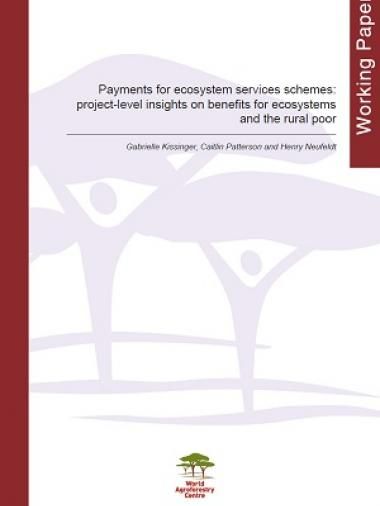Payments for ecosystem services schemes: project-level insights on benefits for ecosystems and the rural poor

Payments for ecosystem services (PES) provide a market-based instrument to motivate changes in land use that degrade ecosystem services. This investigation sought to better understand how effective PES schemes are in meeting the goals of safeguarding ecosystem services, while also benefitting local livelihoods and ensuring pro-poor outcomes. Based on an internet survey of 36 PES projects, including water- biodiversity- and carbon-leading attributes, and analysis of a sub-set of nine case studies, we explore a range of insights and commonalities between projects. Findings indicate that in most cases non-financial benefits in the short-term lead to longer-term financial benefits for landholders, most often as yield increases, future harvest revenue, and access to markets for products. Many projects are not quantifying the full range of ES benefits they are providing. However, full compensation for these benefits is not necessary to safeguard the environmental services. Market mechanisms are an imperfect means of pricing the value of ecosystem services, particularly when enabling policies do not exist or are not consistent (e.g. policies committing to greenhouse gas emission reductions). While national-level PES schemes (e.g. REDD+) share many similarities with project-scale PES schemes, they fundamentally differ in their ability to deploy a full suite of incentives, policies, and regulatory interventions in order to meet their domestic programme goals, thus addressing equity and efficiency needs.
Citación
Kissinger G, Patterson C, Neufeldt H. 2013. Payments for ecosystem services schemes: project-level insights on benefits for ecosystems and the rural poor. ICRAF Working Paper No. 172. Nairobi, Kenya: World Agroforestry Centre (ICRAF).